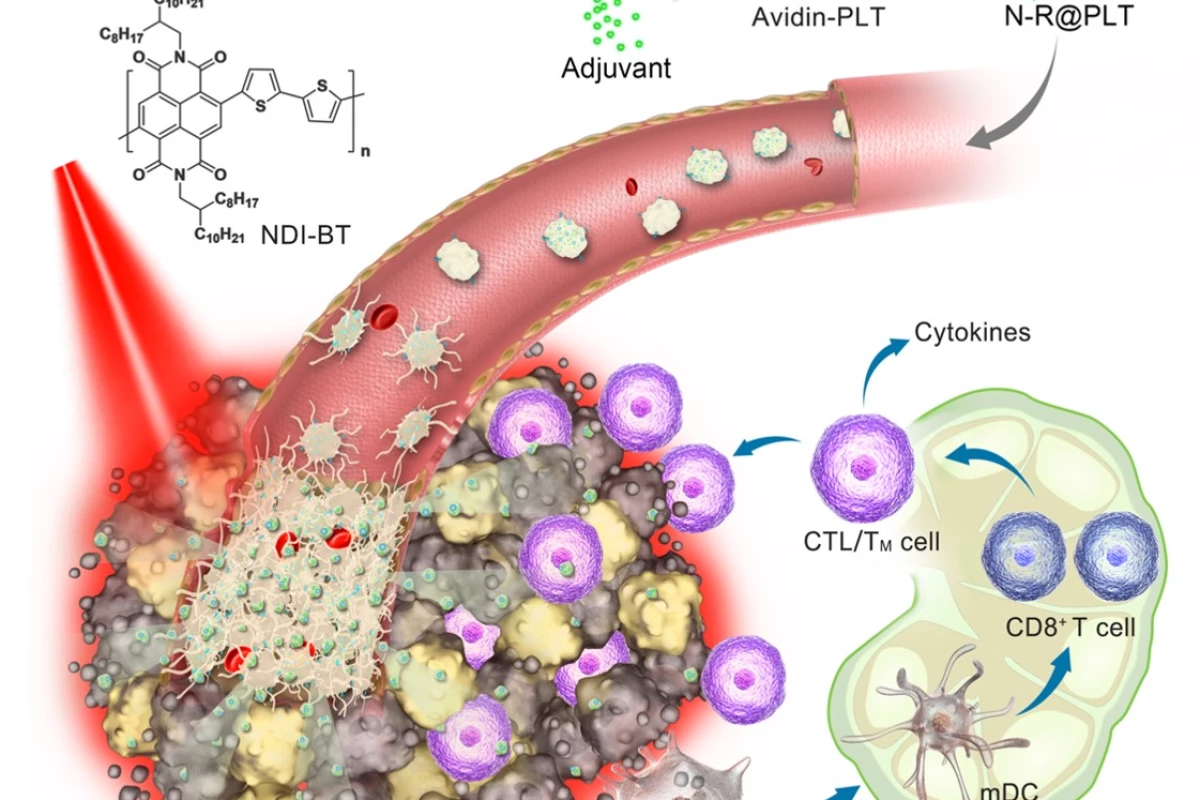Researchers at the Chinese Academy of Sciences (CAS) have developed an intriguing new way to fight cancer by combining two types of experimental therapies. Their secret ingredient is creating a feedback loop using modified blood platelets.
Several promising new anti-cancer techniques have emerged in recent years, such as immunotherapy, which involves supercharging the body’s own immune system to help it better target tumors. Photothermal therapy (PTT), meanwhile, uses nanoparticles that heat up and kill cancer cells when exposed to light.
This new study combines these two methods into one treatment, with the help of platelets. In the bloodstream, platelets have the important job of rushing in to form clots when they detect damage to blood vessels. The CAS researchers took advantage of that, creating a positive feedback loop by modifying platelets so they cause damage to cancer cells which then summons more platelets to join the fight.
To get them to cause that damage, the team loaded platelets with photothermal nanoparticles that are sensitive to near-infrared light, as well as an immunostimulator drug. The idea is that these modified platelets would be introduced into the patient’s bloodstream, then infrared light focused on the tumor. That causes platelets passing through to heat up and damage the blood vessels, attracting more of them to the site.

At the same time, the platelets release the immunostimulator drug, which draws the attention of the body’s immune system. That creates a system-wide immune response against the cancer, helping it attack not just the targeted tumor but others that may have spread through metastasis. The team says this could also prevent cancer from recurring down the track.
As a bonus, the heat damage created even smaller “proplatelets” that transported the drugs deeper into the tumor.
The team tested the technique in nine different mouse models, and found animals that received the full treatment fared much better than groups that received partial or no treatment. In full treatment mice, tumor development stopped almost completely, and 100 percent of them survived for the entire 100-day experiment time. All mice in all other groups died before the halfway point.
"These results show great promise for utilization of this novel biomimetic platelet platform in high-performance and combined anticancer therapies," says Professor Ma Guanghui, an author of the study.
Of course, it’s still early days for this kind of treatment, and there’s no guarantee that the results would carry across to humans. But it’s an intriguing study nonetheless.
The research was published in the journal Science Advances.
Source: Chinese Academy of Sciences





